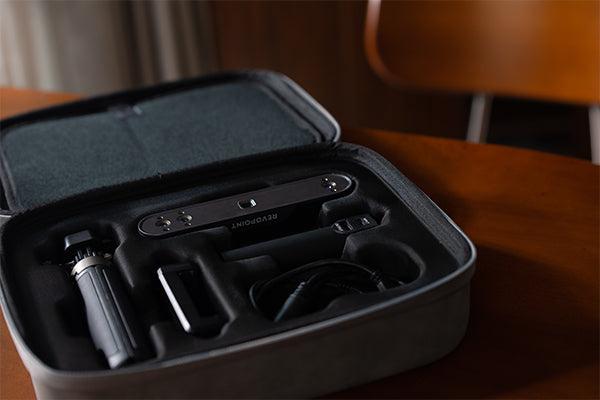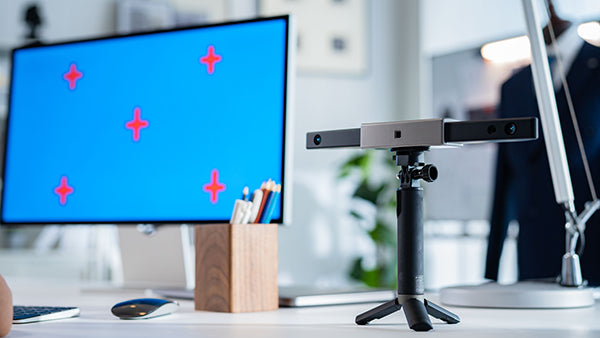If you’ve ever wondered how structured light 3D scanners work, congratulations, you’ve got a curious mind and thirst for knowledge that’ll get you far in life. As you may already know, structured light scanning is one of the main methods of 3D scanning, along with photogrammetry and laser scanning. What you might not know is that structured light scanners are rapidly becoming the most common type of scanner due to their lower cost, fast scanning speed, high accuracy, and flexibility.
So let’s get into it and see how structured laser scanning works!
It’s All About the Light
To understand structured light scanning, you first need to know what structured light is. The name is a pretty big hint, but to clarify, it’s light that’s projected in a specially calibrated pattern. Now this pattern can be a grid, lines, stripes, or anything talented engineers can create that’ll work.
How does it work?
So, when the projected light hits an object’s surface, it distorts as it goes over its surface features. This distorted light is then reflected back into the 3D scanner’s dual-depth cameras.
Using two-depth cameras creates stereo vision, which works like your eyes to determine an object’s depth. Also, like your eyes, the cameras only see what’s in front of them. So to scan an object, the scanner must move around, capturing all the surfaces. As the cameras move across the surface, the images received are triangulated into 3D coordinates.
All the heavy lifting for this calculation is done by an algorithm that triangulates the distortions in the returning light to identify which parts of the object’s surface are closer or farther away from the cameras and then assigns it a 3D coordinate, otherwise known as a point in a point cloud. As it scans, all of these points are rapidly compiled into the scan object’s final 3D model.
What Color of Light?
Structured light scanners use either blue, white, or infrared light. But generally, most 3D scanner makers are moving away from white light as its poor at dealing with ambient light. So, typically, scanners use either blue or infrared light depending on their scanning application.
Miracle Blue
Blue light (used in the Revopoint MINI) is higher resolution than other lights due to its narrow wavelength, which means it’s excellent at capturing lots of fine details and better at dealing with shiny or transparent surfaces, as well as ambient light interference. Also, blue light is less sensitive to heat, so you can scan for longer before the integrity of the scan begins to degrade. The only downside to blue light is that it’s uncomfortable on the eyes, and its short wavelength limits its scanning distance.
Invisible Infrared
Infrared light (used in the POP 2) is lower resolution than blue light and struggles more with shiny or transparent surfaces and ambient light. But it has some advantages over blue light. Firstly it’s invisible, meaning you won’t instinctively close your eyes when having your face scanned. It’s entirely eye-safe and won’t cause any discomfort. And it’s better at scanning moving objects due to its longer wavelength and intensity.



Laisser un commentaire
Ce site est protégé par hCaptcha, et la Politique de confidentialité et les Conditions de service de hCaptcha s’appliquent.